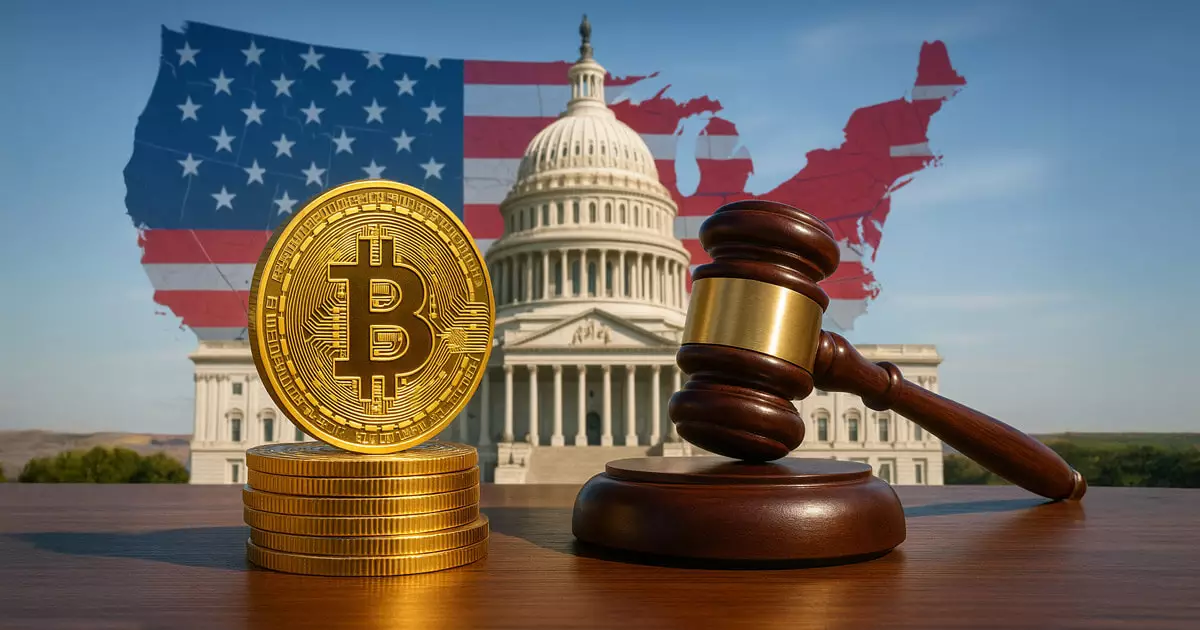In the rapidly evolving world of cryptocurrencies, clarity and regulatory consistency are more than bureaucratic niceties; they are essential for growth and innovation. Enter the Digital Asset Market Clarity Act, introduced by House Financial Services Committee Chairman French Hill. By proposing a cohesive federal framework for the regulation of digital assets, this act addresses a significant void that has characterized the cryptocurrency landscape for far too long. The parameters set forth in this 249-page bill aim not just to define but also to delineate the roles of various stakeholders within the crypto market, a move that’s long overdue in an industry plagued by uncertainty.
The law categorizes digital assets into distinct groupings, defining terms such as “digital commodity,” “mature blockchain system,” and “permitted payment stablecoin.” This stratification isn’t merely academic; it establishes a legal foundation that emerging companies can stake their futures upon. In a sector that can feel like the Wild West, such clarity is not just welcome—it’s lifesaving.
A Safe Harbor for Innovation
An aspect of the Digital Asset Market Clarity Act that stands out is its proposal of a four-year safe harbor for primary token offerings. Companies developing innovative blockchain projects can breathe easier knowing their burgeoning networks will not face relentless scrutiny during their formative years, provided they remain below the $75 million fundraising threshold over any 12-month period. This winds up being a double-edged sword for regulators and entrepreneurs alike: while the latter gains breathing room, the former may have to adapt to a continuously shifting landscape. This practical approach catches a balance that argues against overregulation, proving that government intervention can indeed support, rather than stifle, innovation.
In stark contrast to the SEC’s often-vague approach to crypto regulation, this bill empowers the CFTC with definitive oversight of spot trading and custody of digital commodities. This delineation establishes a fair line of governance, ensuring that only the interactions requiring securities scrutiny will fall under SEC jurisdiction. Such clarity benefits all parties, from large-scale investors to small entrepreneurs navigating the complexities of blockchain technology.
From Theory to Practicality: Market Democrats and Republicans Unite
What’s particularly remarkable about this bipartisan support is how both conservative and liberal ideologies converge in this legislation. While Republicans champion the idea of limited government and the promotion of free markets, Democrats see an opportunity for consumer protection and inclusion—ensuring that the very people behind these new financial tools aren’t left in the dust. This act, co-sponsored by prominent democratic figures, can be viewed as a unifying call to action, highlighting that innovation and regulation can coexist without compromising each other’s core goals.
Ohio Republican Warren Davidson’s focus on transaction freedom and self-custody is indicative of the frustrations many have expressed regarding the absence of clear rules. Such provisions represent a significant step forward in ensuring that the individual consumer can take ownership of their digital assets, free from excessive government oversight that would otherwise be an impediment to personal financial autonomy.
The Global Perspective: Securing America’s Leadership in Digital Assets
The intent of sending this proposal to President Trump highlights a strategic vision: to sustain America’s edge over emerging markets. In an age where fintech giants and nations worldwide are racing to establish their regulations, America must act decisively to safeguard its place as the vanguard of digital finance. Legislation such as this could very well set the stage for the United States to lead the next iteration of the internet—a decentralized, crypto-powered economy.
However, one has to wonder whether such proactive steps are enough. The ever-increasing complexity of financial markets and evolving technologies pose ongoing challenges. While the Digital Asset Market Clarity Act provides a strong foundation, its effectiveness will depend on future adaptations to this legislation, keeping it relevant amid changes in technology and consumer behavior.
Addressing Inequalities: A Democrat’s Take on Consumer Protection
The framing of the act as a consumer-protection measure resonates with traditional Democratic priorities, illustrating that a center-right liberal approach can embrace social equity while also fostering economic progress. Co-sponsors like Angie Craig and Ritchie Torres have emphasized the importance of establishing “rules of the road” for both businesses and consumers, showcasing a commitment to reducing regulatory disparities that disproportionately affect smaller players in the market.
By closing existing regulatory gaps and empowering citizens, this legislation encapsulates the best of both worlds—the thrill of innovation alongside the protection consumers deserve. It’s this dual focus that gives the Digital Asset Market Clarity Act its potential to be a transformative milestone in the American digital landscape.

